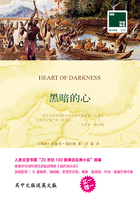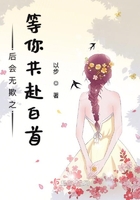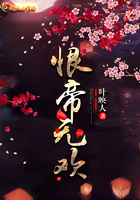"There are poisonous snakes in some countries much larger and much more to be feared than ours," he continued. "In India and Africa are poisonous snakes known as vipers, which can raise up and spread out the forward part of the body into a broad disk. The spectacled viper or cobra of India is one of these. It has a black line resembling a pair of spectacles about the broad portion of its disk. From this snake the jugglers of India draw out the fangs and then teach it to dance. The asp of Egypt is also a viper which has been noted in history. By pressing this snake on the nape of the neck the jugglers of Egypt used to throw it in an immovable position, which they called turning it into a rod.
"Here is a picture of one of our rattlesnakes. It gets its name from a sort of rattle which it has at the end of its tail. The rattle is formed of a number of loose bones, which it shakes when it is angry."SUMMARY
The poisonous snakes have two long fangs in the upper jaw, and poison-bags at the roots of them. Their bite either kills their victim or makes it insensible. The forked tongue is harmless.
Lesson 23
The Non-Poisonous Snakes
"I have been trying to think, Fred, which are the most terrible creatures, the poisonous snakes or the others," said Will, " and I can"t make up my mind.""No, Will, I daresay not," replied Fred, "They are both very dreadful.""But," said Norah, "I should think no creature could be a more fearful enemy than one of those poisonous snakes. It has but to give a single bite with those awful fangs, and it is all over with its victim.""Wait a moment, while I get my book," said Fred, "There are some pictures of these non-poisonous snakes which I want you to see.
"This one is called the boa constrictor, and this the python. They are huge serpents, and often reach as much as forty, fifty, and even sixty feet in length.
"If we could see within their mouths, we should find no long sharp fangs, and no poison-bags, for they do not kill their victims by biting them.
"Teacher says they coil themselves round thetrunk of a tree, and lie in wait for some animal, perhaps a horse, an ox, or a deer.
"They give one awful spring as soon as their victim gets within reach, and coil and twist themselves round its body, with the suddenness of lightning. The poor creature at once finds itself entirely within the power of its enemy; it has no chance of escape.
"Their enormous strength enables these snakes to crush their prey within the folds of their long supple body, till flesh, bones, and all become a mangled mass. They then quietly uncoil themselves and settle down to gorge their meal.
"Like all other snakes, they swallow their prey whole, their scaly skin stretching till it almostbursts with the meal. They then creep away to some quiet spot and sleep till the pangs of hunger awaken them, and send them out to look for another victim.""We have some non-poisonous snakes in this country," said Will, "but they are small and quite harmless. Here is a picture of a common snake. Black snakes are non-poisonous, and, it may amuse you to know, they are the greatest enemies of the rattlesnake, with whom it is said they wage fierce battles. Then we have milk snakes, bull snakes, the common garden snake, which likes to sun itself under rose bushes and catch the insects attracted by the foliage. The black snake seeks high dry hills, and curls itself upon boulders warmed by the summer sun. Most of the non-poisonous snakes seek the lower lands, however, and not uncommonly make their home in damp woods and in banks by the sides of ponds, where their favourite food, the frog, is to be found."SUMMARY
The non-poisonous snakes have no poison fangs; many spring at their victim, wind their long bodies round it, and crush it to death. Some of them are huge serpents, ?fty and sixty feet long.
Lesson 24















